
Manage Anxiety Effectively: Simple Tips for a Calmer, More Focused Mind
Introduction
"Worrying is like a rocking chair. It gives you something to do, but it doesn't get you very far."
-Jodi Picoult, Small Great Things
If you've ever felt your heart racing before a big presentation or struggled with a knot of worry that won't go away, you're not alone. Anxiety is a common experience that affects millions of people. It's not just about feeling stressed from time to time—chronic anxiety can make it challenging to focus, sleep, and enjoy the things you love. In fact, anxiety disorders are the most common mental health condition, impacting about 1 in 5 adults every year (National Institutes of Health, 2016).
The good news? There are proven ways to manage anxiety that go beyond a temporary fix. Whether you're dealing with occasional stress or persistent anxiety, you can make small but impactful changes that help you feel more in control. In this article, you'll find practical strategies that fit into your life, from mindfulness exercises to building better habits. These strategies are designed to be easily incorporated into your daily routine, making them accessible and easy to implement.
By learning how to manage anxiety effectively, you're not just finding quick relief but taking steps toward a healthier and more balanced life. These strategies can help you regain a sense of calm and control, leading to long-term benefits for your mental and physical well-being. Let’s explore how you can use these strategies to start feeling better today.

Understanding Anxiety
Anxiety is more than just feeling worried or stressed—it is a complex response involving both your mind and body. Feeling anxious before a big presentation or when facing a challenging situation is normal. However, anxiety becomes a problem when it starts to interfere with daily life. It often manifests as a persistent worry, dread, or unease that does not go away, even when the stressor is no longer present (National Institutes of Health, 2016).
Common causes of anxiety can range from work pressures and social situations to health concerns and past traumatic experiences. These triggers can differ from person to person, but they often lead to similar physical and emotional symptoms. You might notice a racing heart, rapid breathing, muscle tension, or constant restlessness. Emotionally, anxiety can make you feel overwhelmed, irritable, or exhausted. It is not just an uncomfortable feeling—it can impact your physical health, relationships, and overall quality of life.
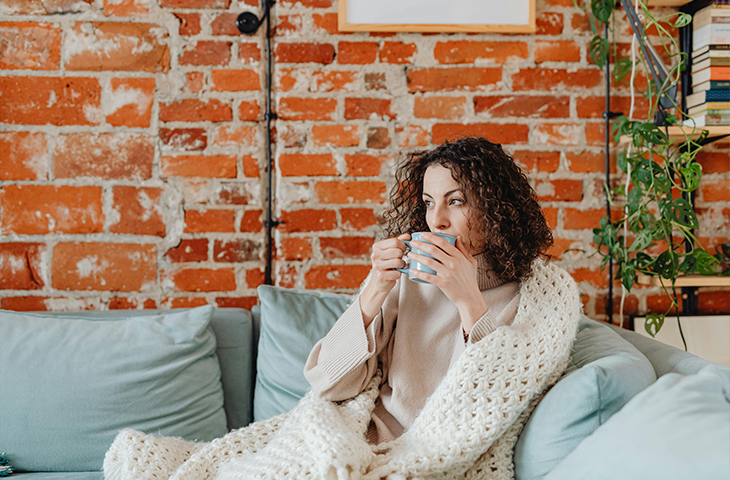
By understanding what anxiety is and what triggers it, you are better positioned to take proactive steps to manage it. Recognizing the symptoms early on allows you to address them before they escalate, giving you the tools to regain a sense of calm and control.
Lifestyle Changes to Reduce Anxiety
Managing anxiety is not just about what you do in anxious moments—it is also about creating a lifestyle that promotes long-term emotional well-being. Making small but impactful changes to your daily habits can strengthen your foundation for reducing anxiety and fostering a more balanced life.
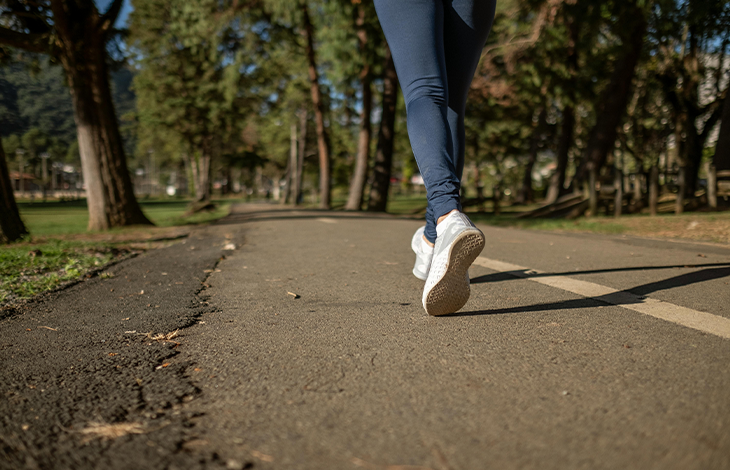
Exercise Regularly
Engaging in regular physical activity is one of the most effective ways to manage anxiety. Studies show that exercise can boost the production of endorphins—your body's natural mood elevators—and reduce stress hormones like cortisol. Even a 30-minute walk or light stretching can affect your feelings. Regular exercise helps improve sleep, increases energy levels, and supports better overall mental health (Mayo Clinic, 2017).
Diet and Nutrition
What you eat can significantly affect your mood and anxiety levels. Eating a balanced diet rich in fruits, vegetables, lean proteins, and whole grains can provide the nutrients your brain needs to function at its best. Foods high in antioxidants, like berries, and those containing omega-3 fatty acids, such as fish, have been linked to reduced anxiety symptoms (Harvard Health Publishing, 2019). On the other hand, excessive sugar, caffeine, and processed foods can contribute to mood swings and increased anxiety, so moderation is key.
Prioritize Sleep Hygiene
Good sleep habits are essential for managing anxiety. A consistent sleep schedule can help regulate your body’s internal clock, making it easier to fall asleep and wake up refreshed. Avoiding caffeine and screens before bed, creating a relaxing bedtime routine, and ensuring your sleep environment is comfortable can make a significant difference. Lack of quality sleep is a known trigger for anxiety, so it is worth investing time in building better sleep habits (Palmer et al., 2024).
Mindfulness and Relaxation Techniques
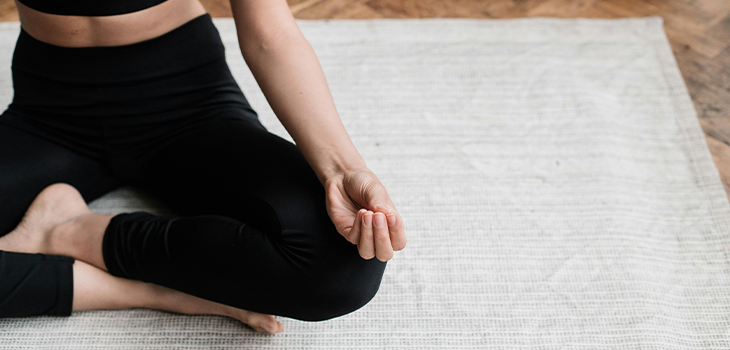
Incorporating mindfulness and relaxation techniques into your daily routine can significantly reduce anxiety. These practices help you stay present, calm your mind, and manage stress more effectively. Here are some techniques that you can try to ease anxiety and promote mental well-being:
Mindfulness Meditation
Mindfulness meditation involves focusing on the present moment without judgment. By observing your thoughts and feelings without getting caught up in them, you can create a sense of distance from anxiety. Studies have shown that regular mindfulness can reduce anxiety symptoms and increase emotional resilience (American Psychological Association, 2019). You can start by setting aside just a few minutes a day to focus on your breathing or use guided meditations available online.
Deep Breathing Techniques
Deep breathing exercises can help calm your nervous system when anxiety strikes. Techniques like the 4-7-8 method—inhale for 4 seconds, hold your breath for 7 seconds, and exhale for 8 seconds—can slow down your heart rate and promote relaxation. Deep breathing activates the parasympathetic nervous system, which counteracts the fight-or-flight response that often accompanies anxiety (Harvard Health Publishing, 2024).
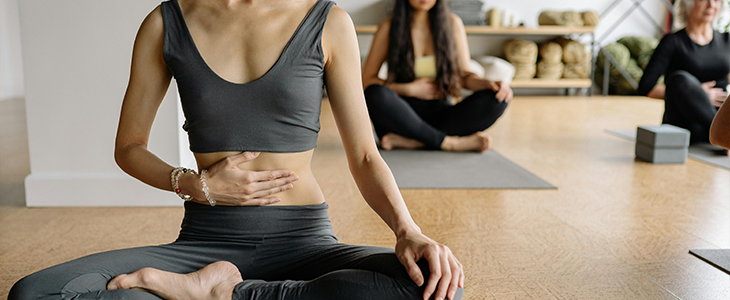
Progressive Muscle Relaxation
Progressive muscle relaxation is a technique that involves tensing and then gradually releasing different muscle groups in your body. This process helps to release physical tension, which often accompanies anxiety. Research suggests that regularly practicing this technique can help lower stress levels and reduce anxiety symptoms (Toussaint et al., 2021).
Visualization and Guided Imagery
Visualization, also known as guided imagery, is a technique that uses mental images to relax the body and mind. Picture yourself in a calm, peaceful setting—like a beach or a quiet forest—and focus on the sensory details. Visualization can be a powerful way to shift your mind away from anxious thoughts and create a sense of inner calm (Mayo Clinic, 2024).
Cognitive and Behavioral Strategies
Tackling anxiety often requires a combination of cognitive and behavioral strategies. These approaches can help you shift your thinking patterns, manage overwhelming emotions, and create positive changes in your behavior. Here are some effective strategies to help you manage anxiety:
Cognitive Behavioral Therapy (CBT)
Cognitive Behavioral Therapy (CBT) is a widely recognized method for treating anxiety. It involves identifying and challenging negative thought patterns and replacing them with healthier, more realistic ones. CBT encourages you to look at your thoughts objectively and develop coping strategies to manage them. Studies have shown that CBT is highly effective in reducing anxiety symptoms, even in the long term (Hofmann et al., 2012). You do not necessarily need a therapist to practice CBT—self-help books, online resources, and apps can guide you through the basics.
Journaling
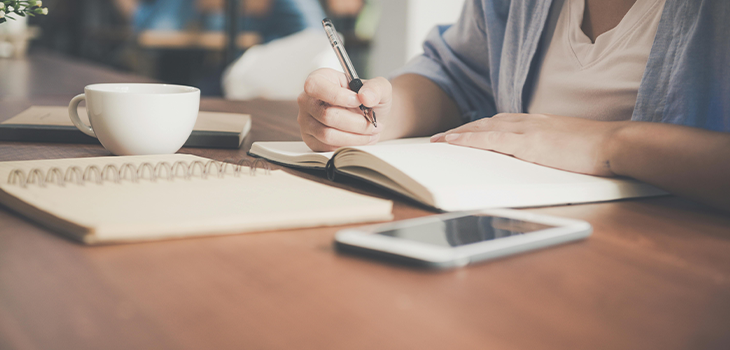
Journaling is a simple yet powerful way to manage anxiety. Writing down your thoughts allows you to express emotions, identify triggers, and gain perspective on your worries. Some people find it helpful to keep a daily anxiety log to track what makes them anxious and how they respond. Research suggests that expressive writing can reduce stress and anxiety by helping you process emotions (Pennebaker & Smyth, 2016).
Setting Realistic Goals
Breaking down tasks into smaller, manageable steps can significantly reduce feelings of overwhelm. Setting realistic goals helps you feel accomplished, even with minor achievements. Start by prioritizing what needs to be done, and set small daily or weekly goals to build momentum. This approach encourages a sense of control and helps reduce anxiety, especially during high-stress times (American Psychological Association, 2018).
Behavioral Activation
Behavioral activation focuses on engaging in positive activities to counteract anxiety and low mood. Even when you do not feel like it, doing activities you once enjoyed can boost your mood and help shift your mindset. This could involve hobbies, spending time with friends, or self-care. Research highlights the importance of staying active and socially connected in managing anxiety symptoms (Hopko et al., 2006).
Building a Support System
Managing anxiety is easier when you are not doing it alone. A strong support system can make a significant difference, offering encouragement, accountability, and a sense of belonging. Whether it is friends, family, or professional guidance, building a reliable support network can provide the stability you need when anxiety feels overwhelming.

The Importance of Connection
Humans are social beings, and feeling connected can ease anxiety symptoms. Studies have shown that social support is crucial to mental well-being, helping reduce stress levels and promote safety (Kawachi & Berkman, 2001). Building healthy connections—whether through friendships, family relationships, or social groups—can provide comfort and a listening ear when needed. Do not be afraid to lean on your support network during tough times; talking openly about what you are experiencing can be a powerful way to reduce anxiety.
Therapy and Counseling
For many, professional therapy is a cornerstone of anxiety management. Therapists and counselors are trained to help you develop coping strategies, identify triggers, and provide a safe space to explore your feelings. Cognitive Behavioral Therapy (CBT) is particularly effective in managing anxiety, helping you reframe negative thought patterns and develop healthier responses (Hofmann et al., 2012). Therapy offers a structured environment to work through anxiety and can lead to long-term improvements in mental health.
Coaching for Personalized Support
Coaching is another option for those seeking guidance in managing anxiety. A coach can provide personalized strategies tailored to your unique challenges, helping you set achievable goals and offering accountability along the way. Coaching focuses on practical steps to reduce anxiety and improve your overall well-being. If you are looking for targeted, action-oriented support, coaching may be the right choice to help you build confidence and resilience.
Support Groups and Peer Connections
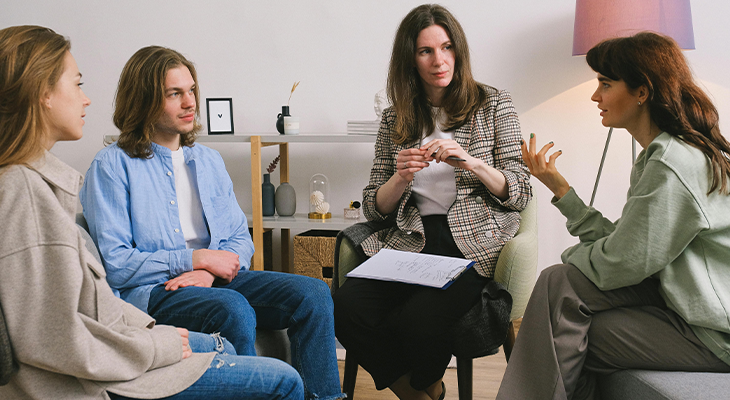
Support groups can be an excellent way to connect with others who understand what you are going through. Many people find comfort in sharing their experiences with a group, as it can reduce feelings of isolation and validate their emotions. Research suggests that peer support can effectively alleviate anxiety symptoms and build a sense of community (Mead et al., 2001). Look for local or online groups focusing on anxiety, mental health, or related topics.
Practical Tips for Managing Anxiety in the Moment
When anxiety hits, it can feel overwhelming, but there are simple techniques you can use in the moment to bring yourself back to a state of calm. These practical strategies can help ground you and reduce the intensity of anxious feelings, providing relief when you need it most:
Grounding Techniques
Grounding techniques are a way to anchor yourself in the present moment, especially when anxiety makes you feel out of control. One popular method is the "5-4-3-2-1" technique: Identify five things you can see, four things you can touch, three things you can hear, two things you can smell, and one thing you can taste. This exercise can shift your focus away from anxious thoughts and back to your surroundings (Texas Tech University, 2021).
Distraction Strategies
Sometimes, the best way to handle anxiety is to take your mind off it with a healthy distraction. Engaging in a hobby you love, going for a walk, listening to music, or even cleaning a small space can provide a mental break from anxiety. Research suggests that productive distractions can reduce the duration and intensity of anxious feelings, allowing you to regain your composure (Hofmann et al., 2010).
Affirmations and Positive Self-Talk
Using positive affirmations can help counteract the negative thought patterns that anxiety often brings. Simple affirmations like "I am in control," "This feeling will pass," or "I can handle this" can boost your confidence during a challenging moment. Studies show positive self-talk can improve mood and reduce stress by promoting a more balanced outlook (Mayo Clinic, 2023).
Deep Breathing and Relaxation
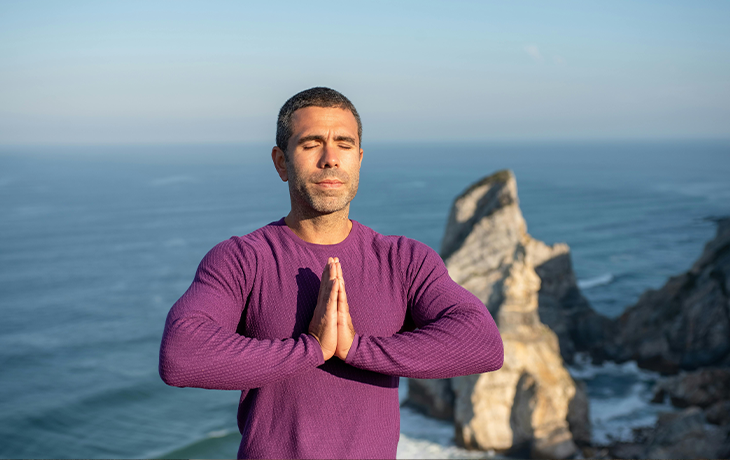
Deep breathing techniques can calm your body's stress response. Try the box breathing method: Inhale for four seconds, hold for four seconds, exhale for four seconds, and hold for another four seconds. This breathing pattern helps regulate your nervous system and create a sense of calm (Harvard Health Publishing, 2023). Deep breathing, combined with muscle relaxation exercises, can significantly reduce the physical symptoms of anxiety.
Long-Term Strategies for Sustained Anxiety Relief
Managing anxiety is not just about handling it in the moment—developing long-term habits can provide lasting relief and resilience. Integrating healthy routines and coping mechanisms into your daily life can reduce the frequency and intensity of anxious episodes over time. Here are some strategies to consider for sustained anxiety relief:

Developing Healthy Habits
Creating consistent daily habits that support your mental well-being is crucial for long-term anxiety management. Regular exercise, healthy eating, and a proper sleep schedule contribute to a more stable mood and reduce anxiety symptoms. Studies suggest that maintaining these habits can enhance emotional resilience and mental health (Harvard Health Publishing, 2020). Aim for a well-balanced lifestyle prioritizing self-care, relaxation, and social connection.
Managing Stress
Learning how to handle stress effectively can prevent it from escalating into anxiety. Time management skills, setting boundaries, and prioritizing relaxation can make a big difference. Consider adopting stress-reducing practices like yoga, mindfulness meditation, or spending time in nature, which have all been linked to decreased anxiety levels (Umadevi et al., 2013). By managing stressors proactively, you can maintain a sense of calm even during hectic times.
Creating Balance
Achieving a healthy work-life balance is essential for keeping anxiety in check. Overworking and neglecting self-care can lead to burnout, which often intensifies anxious feelings. Establishing clear boundaries between work and personal life helps you unwind and recharge, preventing stress from building up. Research shows that maintaining a balanced lifestyle can reduce the risk of chronic anxiety and improve overall life satisfaction (Brough et al., 2020).
Committing to these long-term strategies can build a strong foundation for managing anxiety. These consistent habits empower you to face challenges with greater ease and confidence, leading to a more stable and fulfilling life.
When to Seek Professional Help

Sometimes, self-help strategies and lifestyle changes are not enough to manage anxiety. Recognizing when professional intervention may be necessary to regain control and improve your quality of life is essential. Here are some signs that it might be time to seek professional help:
Persistent Anxiety Symptoms
If anxiety symptoms persist for several weeks or months despite your best efforts to manage them, consulting a professional may be a good idea. Chronic anxiety that interferes with your daily activities, work, or relationships often requires a more comprehensive approach, such as therapy or counseling.
Impact on Physical Health
Anxiety can take a physical toll, leading to issues like chronic headaches, digestive problems, or difficulty sleeping. If your anxiety is causing physical symptoms that are hard to control, seeking help from a healthcare provider can address both the mental and physical aspects of your well-being.
Difficulty Managing Daily Life
If anxiety makes it hard to focus at work, enjoy time with family, or manage everyday responsibilities, professional support may be necessary. A mental health professional can provide guidance, help you develop coping strategies, and create a personalized treatment plan that fits your needs.
Exploring Therapy and Counseling
Therapists, counselors, and coaches are trained to help you navigate anxiety with structured, evidence-based methods. Cognitive Behavioral Therapy (CBT), for instance, is a widely used treatment that can help you reframe negative thoughts and develop healthier responses to anxiety triggers. A mental health professional can offer the expertise and accountability needed to create long-lasting change.
Seeking help is a sign of strength, not weakness. Addressing anxiety with the support of a professional can make a significant difference, helping you regain a sense of control and improving your overall well-being.
Conclusion

Managing anxiety is a journey that takes time, effort, and a combination of strategies tailored to your needs. The good news is that by taking small, consistent steps, you can significantly reduce anxiety's impact on your life. Whether through lifestyle changes, mindfulness practices, cognitive strategies, or building a solid support system, each effort is a meaningful step toward greater well-being.
Remember, anxiety is not something you have to face alone. Seeking professional help through therapy, counseling, or coaching can significantly impact your mental health journey. These experts can work with you to create a personalized plan that suits your needs, helping you build healthier habits and develop effective coping mechanisms.
As a recovery coach, I work closely with my clients to help them manage anxiety as part of their broader path to sobriety. Anxiety is often intertwined with recovery, and learning to handle it in healthy ways is crucial for long-term success. If you are looking to break free from alcohol and develop a healthier mindset, I am here to support you every step of the way. Together, we can create a plan that addresses recovery and empowers you to manage the stressors that come with it.
Take the first step toward reclaiming your peace of mind and building a life that aligns with your goals. If you are ready to explore how recovery coaching can help you manage anxiety and navigate sobriety, let’s connect. I’m offering a free initial consultation to help you determine the best path forward—do not wait to start your journey toward a calmer, more fulfilling life.
References
Brough, P., Timms, C., Chan, X.W., Hawkes, A., Rasmussen, L. (2020). Work–Life Balance: Definitions, Causes, and Consequences. In: Theorell, T. (eds) Handbook of Socioeconomic Determinants of Occupational Health. Handbook Series in Occupational Health Sciences. Springer, Cham. https://doi.org/10.1007/978-3-030-05031-3_20-1
American Psychological Association. (2019). Mindfulness meditation: A research-proven way to reduce anxiety. https://www.apa.org/topics/mindfulness/meditation
Crocker, J., Canevello, A., Breines, J. G., & Flynn, H. (2010). Interpersonal goals and change in anxiety and dysphoria in first-semester college students. Journal of personality and social psychology, 98(6), 1009–1024. https://doi.org/10.1037/a0019400
Harvard Health Publishing. (2019). Nutritional strategies to ease anxiety. https://www.health.harvard.edu/blog/nutritional-strategies-to-ease-anxiety-201604139441
Harvard Health Publishing. (2020). Exercising to relax. https://www.health.harvard.edu/staying-healthy/exercising-to-relax
Harvard Health Publishing. (2023). Try this: Take a tactical breather. https://www.health.harvard.edu/mind-and-mood/try-this-take-a-tactical-breather
Harvard Health Publishing. (2024, April). Relaxation techniques: Breath control helps quell errant stress response. https://www.health.harvard.edu/mind-and-mood/relaxation-techniques-breath-control-helps-quell-errant-stress-response
Hofmann, S. G., Asnaani, A., Vonk, I. J., Sawyer, A. T., & Fang, A. (2012). The Efficacy of Cognitive Behavioral Therapy: A Review of Meta-analyses. Cognitive therapy and research, 36(5), 427–440. https://doi.org/10.1007/s10608-012-9476-1
Hopko, D. R., Robertson, S. M. C., & Lejuez, C. W. (2006). Behavioral activation for anxiety disorders. The Behavior Analyst Today, 7(2), 212–232. https://doi.org/10.1037/h0100084
Kawachi, I., & Berkman, L. F. (2001). Social ties and mental health. Journal of urban health : bulletin of the New York Academy of Medicine, 78(3), 458–467. https://doi.org/10.1093/jurban/78.3.458
Mayo Clinic. (2017). Exercise: 7 benefits of regular physical activity. https://www.mayoclinic.org/healthy-lifestyle/fitness/in-depth/exercise/art-20048389
Mayo Clinic. (2023). Positive thinking: Stop negative self-talk to reduce stress. Mayo Clinic. https://www.mayoclinic.org/healthy-lifestyle/stress-management/in-depth/positive-thinking/art-20043950
Mayo Clinic. (2024). Relaxation techniques: Try these steps to reduce stress. https://www.mayoclinic.org/healthy-lifestyle/stress-management/in-depth/relaxation-technique/art-20045368
Mead, S., Hilton, D., & Curtis, L. (2001). Peer support: a theoretical perspective. Psychiatric rehabilitation journal, 25(2), 134–141. https://doi.org/10.1037/h0095032
National Institutes of Health. (2016). Understanding anxiety disorders. NIH News in Health. https://newsinhealth.nih.gov/2016/03/understanding-anxiety-disorders
Palmer, C. A., Bower, J. L., Cho, K. W., Clementi, M. A., Lau, S., Oosterhoff, B., & Alfano, C. A. (2024). Sleep loss and emotion: A systematic review and meta-analysis of over 50 years of experimental research. Psychological bulletin, 150(4), 440–463. https://doi.org/10.1037/bul0000410
Pennebaker, J. W., & Smyth, J. M. (2016). Opening Up by Writing It Down: How Expressive Writing Improves Health and Eases Emotional Pain (3rd ed.). Guilford Press.
Texas Tech University. (2021). 5-4-3-2-1 grounding technique for anxiety. Texas Tech University Risk Intervention & Safety Education (RISE). https://www.depts.ttu.edu/rise/Blog/54321.php
Toussaint, L., Nguyen, Q. A., Roettger, C., Dixon, K., Offenbächer, M., Kohls, N., Hirsch, J., & Sirois, F. (2021). Effectiveness of Progressive Muscle Relaxation, Deep Breathing, and Guided Imagery in Promoting Psychological and Physiological States of Relaxation. Evidence-based complementary and alternative medicine : eCAM, 2021, 5924040. https://doi.org/10.1155/2021/5924040
Umadevi, P., Ramachandra, Varambally, S., Philip, M., & Gangadhar, B. N. (2013). Effect of yoga therapy on anxiety and depressive symptoms and quality-of-life among caregivers of in-patients with neurological disorders at a tertiary care center in India: A randomized controlled trial. Indian journal of psychiatry, 55(Suppl 3), S385–S389. https://doi.org/10.4103/0019-5545.116304

